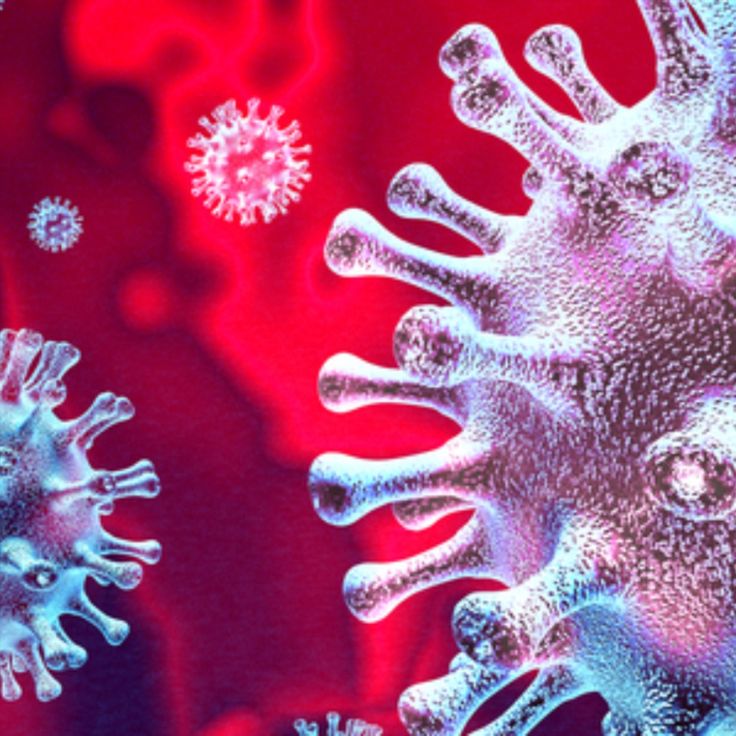Zoonotic diseases, also known as zoonoses, are infectious diseases that can be transmitted from animals to humans. These diseases are not a new phenomenon but have gained significant attention in recent years due to their role in global pandemics, including the COVID-19 outbreak. With rising human encroachment on wildlife habitats, increased livestock farming, and globalization, the frequency and impact of zoonotic diseases have grown substantially, making them a critical public health concern.
This article explores zoonotic diseases, their causes, and transmission methods, as well as the measures needed to prevent their spread. We will examine notable examples of zoonotic diseases, their impact on global health, and the growing awareness of these diseases in Pandemic News and other media outlets.
What Are Zoonotic Diseases?
Zoonotic diseases are infections caused by bacteria, viruses, parasites, or fungi that are spread from animals to humans. These diseases can originate from both domesticated and wild animals, including livestock, pets, and wildlife. Transmission occurs through direct contact with infected animals, through vectors like mosquitoes, or by consuming contaminated animal products.
Some zoonotic diseases have mild symptoms, while others can cause severe illness or even death in humans. Not all zoonotic diseases are transmitted from human to human, but some can evolve to become contagious among people, as seen in certain viral outbreaks.
Common Transmission Pathways of Zoonotic Diseases
Zoonotic diseases can spread through several channels:
- Direct Contact: Touching or handling infected animals, their body fluids, or tissues can result in the transmission of diseases. This route is particularly common for livestock handlers, farmers, pet owners, and veterinarians.
- Indirect Contact: Humans can also be exposed to zoonotic diseases through contact with contaminated surfaces, soil, or water that has been exposed to infected animals.
- Vector-Borne Transmission: Insects like mosquitoes, ticks, and fleas can act as vectors, transmitting diseases from animals to humans by biting them. These vectors are responsible for the spread of diseases such as Lyme disease, dengue fever, and Zika virus.
- Foodborne Transmission: Consumption of undercooked or contaminated animal products, such as meat, eggs, or dairy, can lead to foodborne zoonotic diseases like Salmonella or E. coli infections.
- Airborne Transmission: In some cases, zoonotic diseases can be transmitted through the air, especially when inhaling droplets or dust particles contaminated by infected animals, such as in the case of avian influenza.
Understanding these transmission routes is critical to preventing and controlling zoonotic disease outbreaks, especially in areas where human-animal interaction is frequent.
Notable Zoonotic Diseases
Over the years, several zoonotic diseases have caused significant public health challenges, resulting in global outbreaks or even pandemics. Some of the most notable examples include:
1. COVID-19
The COVID-19 pandemic is perhaps the most recent and impactful zoonotic disease in modern history. Caused by the SARS-CoV-2 virus, COVID-19 is believed to have originated in bats, with transmission to humans possibly occurring via an intermediary animal, such as pangolins. The virus rapidly spread across the globe, leading to millions of deaths and overwhelming healthcare systems worldwide.
COVID-19 brought zoonotic diseases into the spotlight, raising awareness about the risks of animal-to-human transmission and highlighting the importance of pandemic preparedness. Discussions of the virus continue to dominate Pandemic News, with scientists working to understand its origins and prevent future outbreaks.
2. HIV/AIDS
The human immunodeficiency virus (HIV) is another zoonotic disease that has had a profound impact on global health. HIV is believed to have originated from simian immunodeficiency virus (SIV) found in chimpanzees, with transmission to humans occurring through the handling of bushmeat in Central Africa.
Since the first cases were identified in the early 1980s, HIV/AIDS has spread to every region of the world, affecting millions of people. While antiretroviral therapies have improved the prognosis for those infected, HIV/AIDS remains a major public health issue, especially in developing countries.
3. Influenza (Avian and Swine Flu)
Influenza viruses, particularly avian influenza (bird flu) and swine influenza (swine flu), are zoonotic diseases that can cause seasonal epidemics and, in some cases, pandemics. Avian influenza viruses originate in birds and can infect humans through close contact with poultry or contaminated environments. Swine flu, caused by the H1N1 virus, can spread from pigs to humans and subsequently from human to human.
The 2009 H1N1 influenza pandemic, also known as swine flu, caused widespread illness across the globe, leading to over 18,000 confirmed deaths. Although vaccination efforts and public health measures have mitigated the impact of influenza, these zoonotic viruses continue to pose a threat.
4. Ebola Virus Disease
The Ebola virus, which causes severe hemorrhagic fever, is another zoonotic disease that has led to several deadly outbreaks in Africa. Bats are believed to be the primary reservoir for the virus, with transmission to humans occurring through contact with infected wildlife, including primates and fruit bats.
Ebola outbreaks have a high fatality rate, and the 2014-2016 West African Ebola epidemic claimed over 11,000 lives. While containment efforts and vaccines have helped control the spread of Ebola, its zoonotic origins make it a recurring threat in regions where humans and wildlife frequently interact.
5. Rabies
Rabies is a viral zoonotic disease that affects the central nervous system and is almost always fatal once symptoms appear. The disease is primarily transmitted through the bite of an infected animal, such as dogs, bats, raccoons, or foxes. Rabies is preventable through vaccination, and post-exposure treatment is effective if administered promptly.
While rabies has been largely controlled in many developed countries through vaccination programs, it remains a significant public health concern in regions with high populations of stray dogs and limited access to vaccines.
6. Zika Virus
The Zika virus, primarily transmitted by mosquitoes, is another vector-borne zoonotic disease that gained global attention during the 2015-2016 outbreak in the Americas. While the disease itself typically causes mild symptoms in humans, it can have severe consequences for pregnant women, as it has been linked to birth defects such as microcephaly.
The Zika virus highlights the complexity of zoonotic diseases, as it involves both animal vectors (mosquitoes) and human hosts. Its spread across borders underscored the need for international cooperation in controlling mosquito populations and preventing the transmission of vector-borne diseases.
The Role of Environmental and Human Factors in Zoonotic Disease Emergence
Several environmental and human-related factors have contributed to the rising incidence of zoonotic diseases. These factors not only increase the likelihood of disease transmission but also complicate efforts to contain outbreaks.
1. Deforestation and Habitat Destruction
The destruction of natural habitats due to deforestation, agricultural expansion, and urbanization has brought humans into closer contact with wildlife, increasing the risk of zoonotic disease transmission. When animals are displaced from their habitats, they may come into closer proximity to human populations, allowing diseases to spread more easily.
In regions like the Amazon rainforest, deforestation has been linked to the emergence of diseases such as malaria and dengue fever, as mosquitoes and other vectors thrive in disturbed environments. Conservation efforts are critical to reducing the risk of zoonotic disease transmission by preserving natural ecosystems and preventing human encroachment on wildlife habitats.
2. Intensive Livestock Farming
The rise of industrial-scale livestock farming has also contributed to the emergence of zoonotic diseases. In densely populated farms, animals are often kept in close quarters, creating ideal conditions for pathogens to spread rapidly. The overuse of antibiotics in livestock farming can also contribute to the development of antibiotic-resistant bacteria, which can be transmitted to humans through direct contact or contaminated food.
Recent outbreaks of zoonotic diseases such as avian influenza and swine flu have been linked to intensive farming practices, prompting calls for stricter regulations and improved animal welfare standards to reduce the risk of future outbreaks.
3. Globalization and International Travel
Globalization has made the world more interconnected than ever before, facilitating the rapid spread of zoonotic diseases across borders. International trade and travel can transport infectious diseases from one region to another, as seen in the global spread of COVID-19, SARS, and other zoonotic viruses.
The ease of travel and trade has also increased the risk of invasive species and disease vectors, such as mosquitoes, being introduced into new environments. This underscores the importance of global surveillance and collaboration in monitoring zoonotic disease outbreaks and preventing their spread.
Preventing and Controlling Zoonotic Diseases
Given the complexity and frequency of zoonotic disease outbreaks, a multi-faceted approach is necessary to prevent and control their spread. Governments, international organizations, and public health agencies must work together to implement effective strategies.
1. Strengthening Public Health Systems
Robust public health systems are essential for detecting and responding to zoonotic disease outbreaks. Investments in healthcare infrastructure, disease surveillance, and early warning systems can help identify emerging zoonotic threats and contain them before they spread.
2. Promoting One Health Initiatives
The One Health approach recognizes that human health, animal health, and environmental health are interconnected. By promoting collaboration between medical, veterinary, and environmental experts, One Health initiatives can address the root causes of zoonotic diseases and develop comprehensive prevention strategies.
3. Reducing Wildlife Trade
The illegal wildlife trade has been linked to several zoonotic disease outbreaks, including SARS and COVID-19. Regulating and reducing wildlife trade can prevent the spread of zoonotic pathogens by limiting human contact with infected animals. Efforts to combat wildlife trafficking should be supported by stronger international regulations and law enforcement.
4. Increasing Awareness and Education
Public awareness campaigns can help educate people about the risks of zoonotic diseases and promote behaviors that reduce the risk of transmission. These campaigns can target specific groups, such as farmers, pet owners, and travelers, to raise awareness about safe animal handling, vaccination, and disease prevention measures.
Conclusion
Zoonotic diseases pose a significant and growing threat to global health, driven by environmental, agricultural, and societal factors. The COVID-19 pandemic has brought these diseases into the spotlight, underscoring the need for proactive measures to prevent future outbreaks. As Pandemic News continues to highlight, addressing zoonotic diseases requires international collaboration, investment in public health, and a holistic approach to managing the intersections of human, animal, and environmental health.



